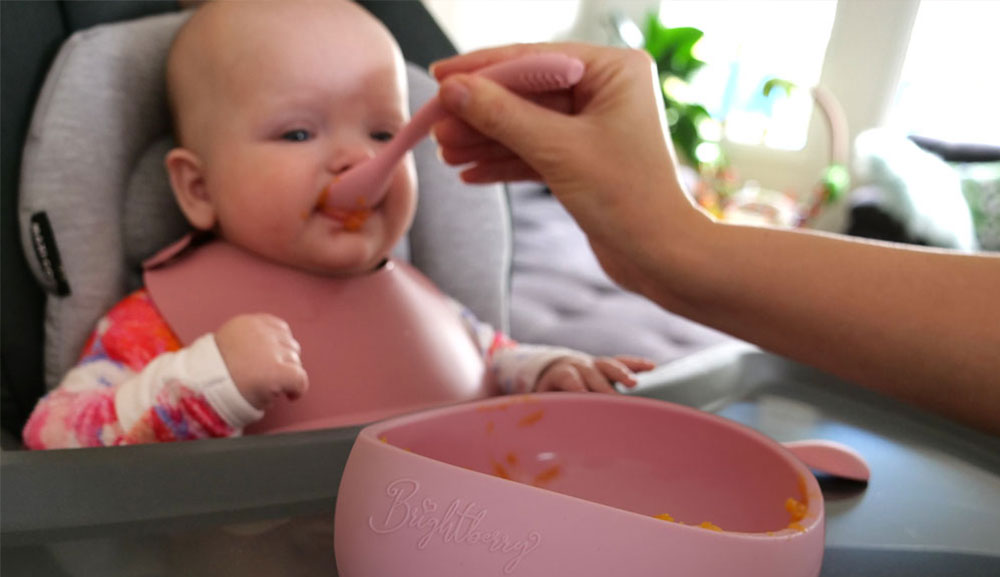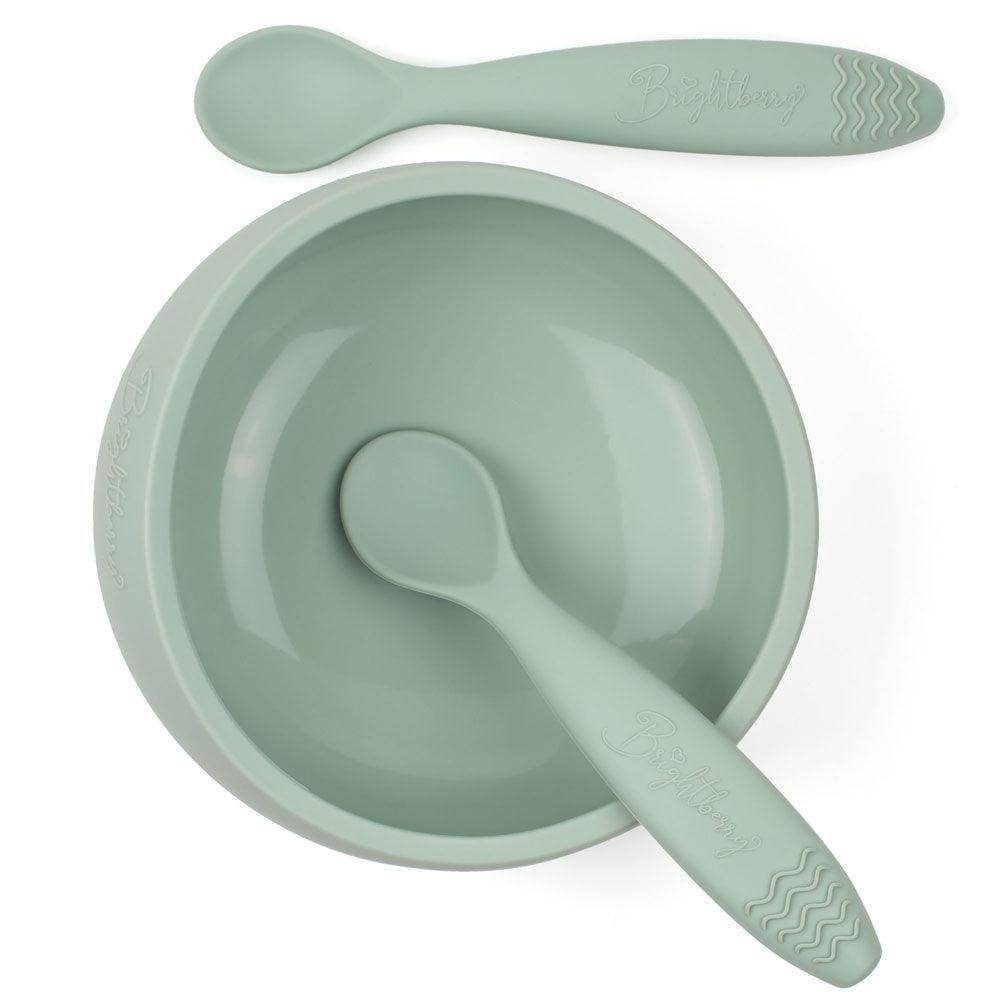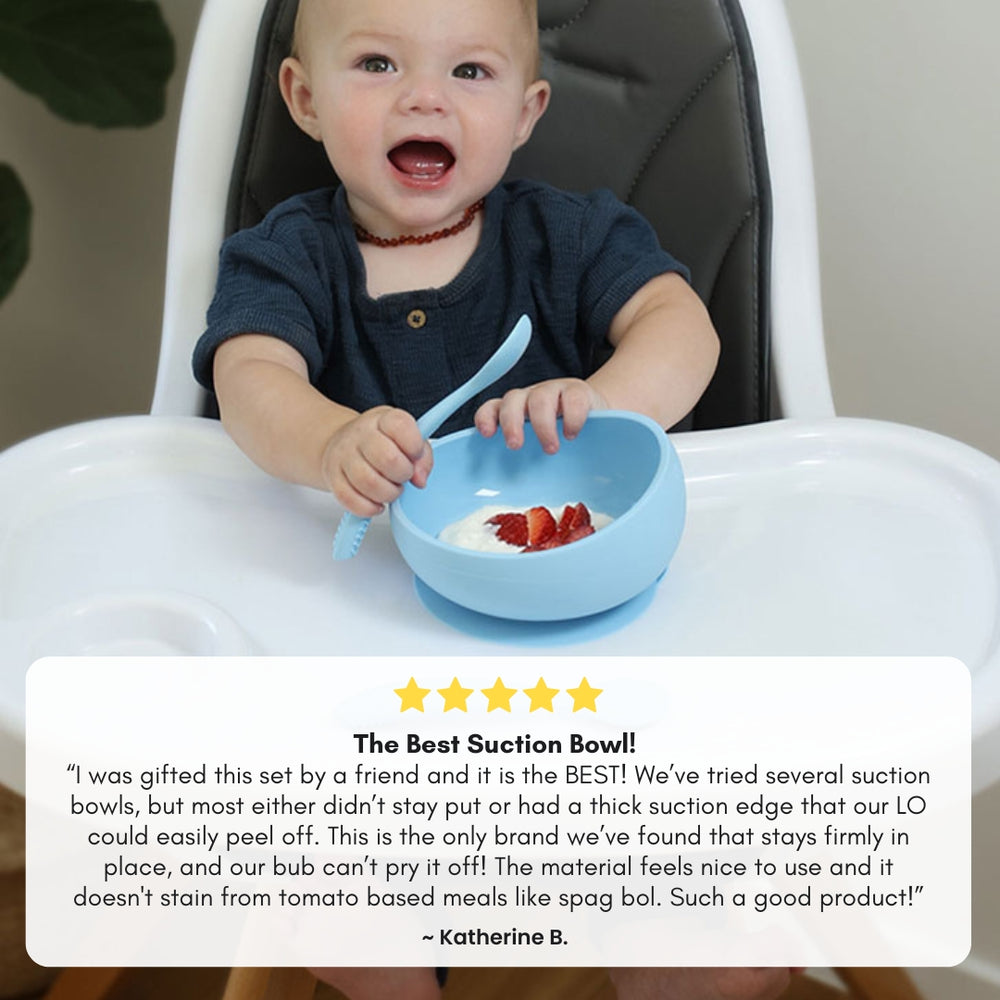How to Teach Babies to Self-Feed

Teaching babies to self-feed is an exciting milestone in their development. It fosters independence, fine motor skills, and a healthy relationship with food. As parents and caregivers, ensuring that this transition is smooth, frustration-free, and engaging is essential.
With insights from parents and professionals, using the right approach and tools can make all the difference in teaching babies to self-feed.
Why Self-Feeding Matters
Self-feeding isn’t just about eating; it’s a skill that supports your child’s overall development. It helps them:
- Improve hand-eye coordination and fine motor skills.
- Develop independence and confidence.
- Explore textures, tastes, and colours of food.
- Learn proper chewing and swallowing techniques.
However, the journey to independent eating can be messy and challenging. A positive attitude towards food is crucial: encouraging exploration without praising unwanted behaviours like food throwing is important to avoid reinforcing those actions.
As parents and professionals, we’ve seen how fostering independence through self-feeding benefits both children and their families.
When to Start Self-Feeding
Most babies are ready to begin self-feeding around 6-8 months of age. Signs your baby might be ready include:
- Sitting up independently.
- Showing interest in food during mealtime.
- Grasping objects with their hands.
Every baby is unique, so pay attention to their cues. Starting too early can lead to frustration, while starting too late might miss a critical learning window.
Steps to Teach Self-Feeding
1. Introduce Finger Foods
Begin with soft, easy-to-grasp finger foods that are easy to pick up and chew.
- Steamed vegetables (carrots, broccoli florets, sweet potato).
- Soft fruits (banana slices, avocado chunks, or peeled pear pieces).
These foods are not only nutritious but also encourage your baby to develop their pincer grasp. Serving portions in divided plates can help keep foods organised and easy to explore. Our plates with cleverly hidden suction bases ensure they stay put, reducing frustration for your baby.
2. Start with Baby-Friendly Spoons
Once your baby is comfortable with finger foods, it’s time to introduce utensils. Choose ergonomic spoons designed for small hands, with easy-grip, non-slip handles. Silicone spoons are an excellent choice as they are safe, soft, and soothing for teething babies.
Introduce pre-loaded spoons to your baby. Dip a spoon in yoghurt, mashed vegetables, or porridge, and hand it to your baby to hold. This helps them associate utensils with feeding.
3. Use Properly Designed Tableware
Choose tableware that is thoughtfully designed with children in mind. Ergonomic utensils and dishes with strong suction bases to keep bowls securely in place and inwardly curved edges for easy scooping can make mealtimes less stressful for both kids and parents.
Using suction plates and bowls, like Brightberry’s range, helps prevent spills and reduce mess. Our tableware is recommended by occupational therapists and speech pathologists for its ability to encourage independence, support the development of proper feeding patterns, and stay securely in place during mealtime. These features allow your child to focus on learning self-feeding skills without the frustration of sliding plates or bowls.
Brightberry’s tableware is designed by professional industrial designers who are also parents, ensuring every detail supports independent eating. Feedback from occupational therapists helps us refine our products to meet developmental needs.
4. Be Patient with Mess
Mealtimes can get messy, but that’s all part of the learning process. Encourage your baby to explore their food freely: this hands-on experience is essential for development. To make cleanup easier, choose tableware designed to minimise spills and reduce mess, and consider using waterproof accessories to keep the mess manageable.
5. Model Good Eating Habits
Babies learn by watching. Eat with your baby and model proper utensil use, chewing, and table manners. Stay consistent with your reactions: smile and praise their efforts, but avoid smiling or showing approval if they throw food or utensils. Gently reinforce desired behaviours instead.
6. Gradually Introduce Variety
As your baby becomes more confident, introduce different textures, foods, and utensils. This keeps mealtimes engaging and helps develop a well-rounded eater. Offering balanced meals with different food groups can be both fun and educational.
Divided plates are perfect for this stage, making it simple to present a balanced meal with separate sections for different food groups. This layout helps keep foods organised and appealing, turning every meal into an opportunity for exploration.
Common Challenges with Self-Feeding and Solutions
Food Throwing
Throwing food is a natural part of your baby exploring cause and effect, but it can be frustrating. Stay calm and consistent, gently reminding your baby that food belongs on the plate. Using suction plates and bowls, like Brightberry’s, can keep mealtimes tidy and reduce the temptation to toss items.
Refusal to Use Utensils
It’s common for babies to prefer their hands over utensils when starting out. Instead of forcing utensils, continue to offer them and demonstrate their use during meals. Over time, consistent exposure will encourage your baby to adapt and build confidence with utensils.
Lack of Interest
If your baby seems disinterested in self-feeding, try offering foods with different textures or introducing more colours. Mealtime can also be turned into a fun activity with colourful tableware that grabs their attention.
Benefits of Properly Designed Tableware
Choosing well-designed tableware makes mealtimes easier and supports your baby’s developmental journey. The proper design promotes:
- Focused learning with reduced distractions.
- Improved coordination and motor skills.
- Positive mealtime experiences, setting the stage for lifelong healthy eating habits.
Brightberry tableware, designed by parents and professionals, is endorsed by occupational therapists and speech pathologists for promoting independence and proper feeding skills. Our award-winning designs, recognised by industry experts, ensure your child’s developmental journey is supported every step of the way.
Final Thoughts
Teaching babies to self-feed is a rewarding journey that requires patience, consistency, and the right tools. Properly designed tableware, like Brightberry’s, can transform this process into a smoother, more enjoyable experience for both you and your little one.
By combining thoughtful design, professional expertise, and parent-driven innovation, Brightberry tableware supports your baby’s independence while making mealtimes less stressful. Remember, every baby learns at their own pace; celebrate each small success along the way.
Ready to start your self-feeding journey? Explore our range of Brightberry tableware and give your baby the tools they need for independent eating success!











